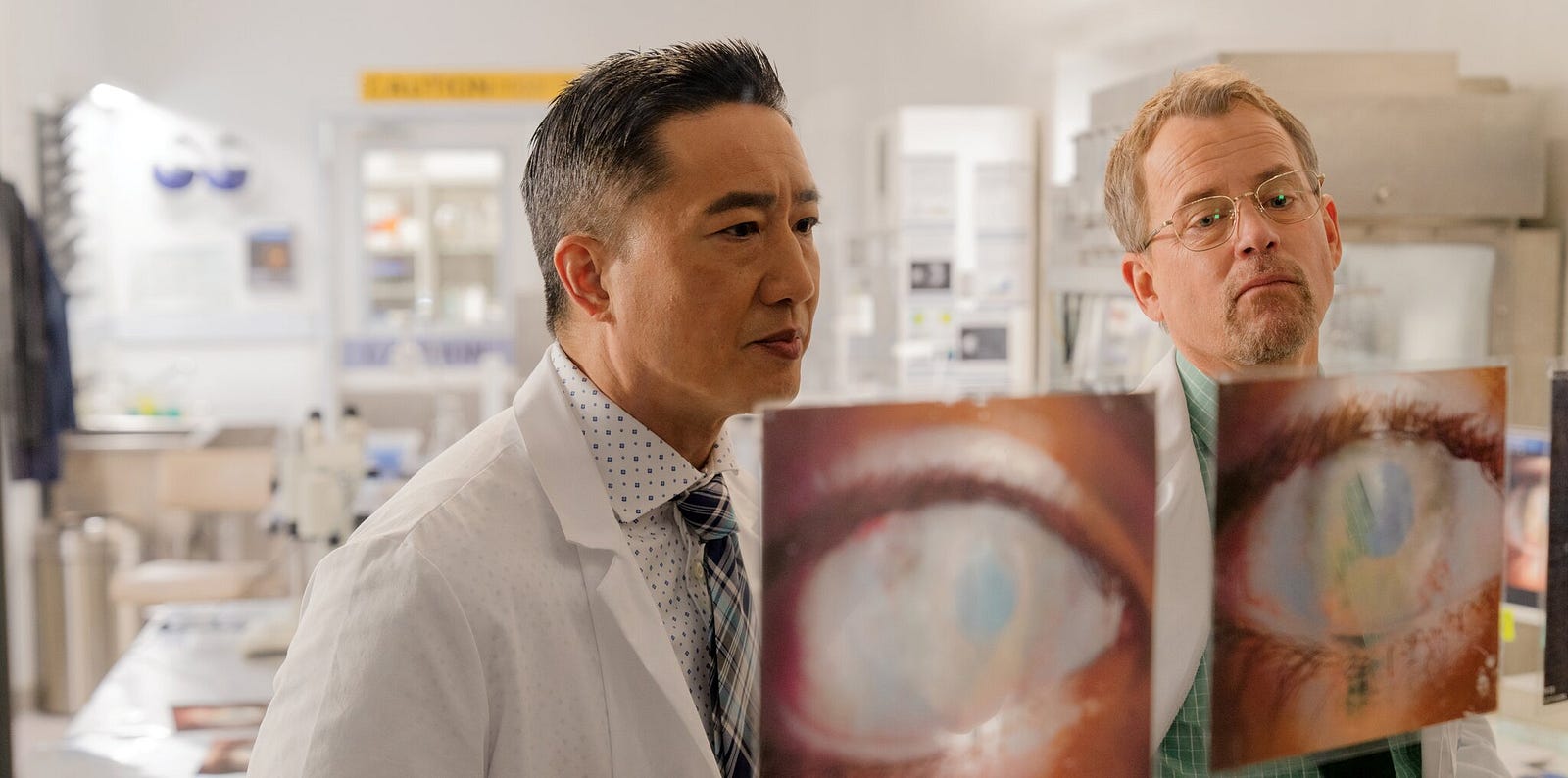
“Sight”
Rating: 9/10
Director and writer: Andrew Hyatt
Style: Biopic/Drama
Time: 1 hour, 40 minutes

Review by Mike Szymanski
Just when you think you know everything about every possible true story, some amazing tale makes it to the big screen and overwhelms you.
I am particularly tuned in to medical breakthrough stories — and with a special interest in eyes and blindness — yet I never heard of this story of Dr. Ming Wang, who faced personal struggles almost as difficult as the patients he is trying to help.
If this filmic journey of “Sight” doesn’t make you alternately laugh and cry, and make you swell with emotion, then you simply do not have a heart.
A true story endorsed by the doctor himself, the story actually starts off with a brutal act of violence in India in 2006. A stepmother is seen burning the eyes of a young girl with sulfuric acid. It turns out that beggars who are blind can make more money in the poor streets of Calcutta, one of the worst slums in the world.
The girl has lived a decade in darkness and is brought by a nun (played by classic actress Fionnula Flannagan) to Dr. Wang to help cure her of blindness. They are looking for even a sliver of a chance for hope that she may someday see again.
Ming Wang as an adult is played adeptly by actor Terry Chen, and his sidekick and assistant, Dr. Misha Bartnovsky is played by Greg Kinnear (Oscar nominated for his gay role in “As Good As It Gets”). Together the doctors struggle through successes and failures as patients with eyesight challenges come to them for help.

The two seem to have a running joke about Dr. Wang fixing his sidekick’s eyesight, to which he always answers a prompt “no.”
The doctor is shown coming from difficult and humble roots when he’s played as a young Ming (by Ben Wang). As a youth, he is witness to the brutalities of the Cultural Revolution in China. He watches the science teacher he admires get punished and ridiculed by young thugs in 1974, and he is separated from his first girlfriend Lee-Lee whom he never sees again.
When the revolution has ended, Wang crams three years of high school into two months of studying with the help of his parents. Remarkably, he is one of four students in the one million students from Communist China who gets a scholarship and travels to the United States for an education. Being told all along the way that it’s impossible for him to become a doctor in this country, he beats the odds every step of the way.
It isn’t until Dr. Wang meets the Indian girl Kajal (remarkably portrayed by Mia SwamiNathan) that the doctor understands the true meaning of what becomes his life mantra: “There is more to life than what you see. The past makes the present possible.”
While the nun tries to get the doctor to continue to believe in miracles, he runs into frustrations trying to help more and more impossibly blind children. The challenges are overwhelming and we see his constant battles trying to do the impossible by getting patients to see, somethings for the first time.
He develops a brainstorm that placenta can help with healing in the eye, and then he tries an experiment on blind rabbits.
In a very comical scene, Kinnear’s character is trying to catch the blind rabbits set loose in a lab, while Dr. Wang is looking through a microscope and ignoring the chaos around him.
Watching how this modest and shy young man becomes a world-class pioneering eye surgeon is inspiring and heartwarming.
The movie has debuted in May 2024 during Asian American and Pacific Islander Heritage Month, and theaters showing the film have made efforts for people with vision, hearing and other physical handicaps to enjoy the movie.

Music in the film is stunning, mixing flutes with traditional Chinese music and becoming an integral part of every scene. The music is by Sean Philip Johnson, who has composed other aspiring soundtracks for similarly inspiring films.
One of the most touching moments is when Dr. Wang unveils a girl’s bandages, and Maria sees herself for the first time and says “I’m so pretty.” That actual video moment is shown in the credits at the end of the film, and it’s incredibly moving.
Some of the humor comes from Dr. Wang’s family, especially when his parents and brother move to the United States. His brother is trying to follow in some kind of success by coming up with ideas like: Facebook for cats.
Dr. Wang created the amniotic membrane contact lens used by tens of thousands to restore their eyesight. He created a fundraiser called the “EyeBall” and at the end of the film, in the credits, the actual doctor is shown dancing with the real Kajal, who has yet to get her eyesight back.
Dr. Wang’s patients have included stars such as Dolly Parton, Charlie Daniels, Kenny Chesney, Naomi Judd, and “Dancing with the Stars” pro, Julianne Hough.
The film is offering a QR code on the screen at the end to help out by joining the “I AM IN” campaign. That not only encourages donations, but individuals are encouraged to share their personal experiences of overcoming adversity and making contributions to American society on social media, using the hashtag #iamin and #thisis.
Find out more about the I AM IN campaign at Angel.com/iaminFind out more about the movie “Sight” at Angel.com/sight
###



You must be logged in to post a comment.